 | TODAY IN SCIENCE HISTORY NEWSLETTER - 30 MAY |
| Feature for Today |
 On 30 May 1892, Lewis M. Rutherfurd died, the American astrophysicist and spectroscopist who made the first telescopes designed for celestial photography. From his own observatory (built in 1856), he photographed the Moon, Jupiter, Saturn, the Sun, and stars down to the fifth magnitude. On 30 May 1892, Lewis M. Rutherfurd died, the American astrophysicist and spectroscopist who made the first telescopes designed for celestial photography. From his own observatory (built in 1856), he photographed the Moon, Jupiter, Saturn, the Sun, and stars down to the fifth magnitude.In an Obituary of Lewis Morris Rutherfurd (1892), John K. Rees begins by telling that he was named after Lewis Morris, one of the signers of the Declaration of Independence, from whom his mother was a direct descendent. The author continues with a fine account of this notable astronomer's many contributions in his field. |
| Book of the Day | |
| |
| Quotations for Today | |
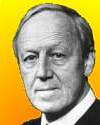 | "Scientists tend to resist interdisciplinary inquiries into their own territory. In many instances, such parochialism is founded on the fear that intrusion from other disciplines would compete unfairly for limited financial resources and thus diminish their own opportunity for research." (Naming territorial dominance, greed, and fear of the unknown, as some of the influences on the increasing specialization of science.) |
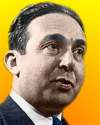 | "Those individuals who give moral considerations a much greater weight than considerations of expediency represent a comparatively small minority, five percent of the people perhaps. But, In spite of their numerical inferiority, they play a major role in our society because theirs is the voice of the conscience of society." |
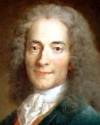 | "Superstition is to religion what astrology is to astronomy; the mad daughter of a wise mother." |
| QUIZ | |
| Before you look at today's web page, see if you can answer some of these questions about the events that happened on this day. Some of the names are very familiar. Others will likely stump you. Tickle your curiosity with these questions, then check your answers on today's web page. | |
| Births | |
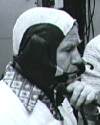 |  Aleksey Arkhipovich Leonov, born 30 May 1934, was a Soviet cosmonaut who was the first man to climb out of a spacecraft in space. Voskhod 2 was launched into space carrying Leonov with Pavel Belyayev aboard. On the second orbit Leonov left the spacecraft through the air lock while still tethered to the vessel. He took motion pictures and practiced moving outside of the spacecraft for 10 minutes. Voskhod 2 made 17 orbits at about 110 miles (177 km) above earth. Ten years later, Leonov commanded the Soviet Soyuz craft that linked in orbit with a U.S. Apollo craft. Aleksey Arkhipovich Leonov, born 30 May 1934, was a Soviet cosmonaut who was the first man to climb out of a spacecraft in space. Voskhod 2 was launched into space carrying Leonov with Pavel Belyayev aboard. On the second orbit Leonov left the spacecraft through the air lock while still tethered to the vessel. He took motion pictures and practiced moving outside of the spacecraft for 10 minutes. Voskhod 2 made 17 orbits at about 110 miles (177 km) above earth. Ten years later, Leonov commanded the Soviet Soyuz craft that linked in orbit with a U.S. Apollo craft. In what decade did this first space walk take place? In what decade did this first space walk take place? |
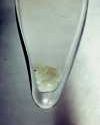 |  Joseph William Kennedy, born 30 May 1916 was an American scientist, one of four co-discoverers of a new element which was produced from uranium oxide bombarded with deuterons in a cyclotron at the Univ. of California at Berkeley. Subsequently, on 28 Mar 1941, Glenn Seaborg, Emilio Segrè and Joseph Kennedy demonstrated that this element, like U235, is fissionable with slow neutrons, thus neutrons of any speed, which implies it's a potential fission bomb material. After working with Seaborg, Kennedy was chosen by J. Robert Oppenheimer to lead the Chemistry Division of the Manhattan Project. Joseph William Kennedy, born 30 May 1916 was an American scientist, one of four co-discoverers of a new element which was produced from uranium oxide bombarded with deuterons in a cyclotron at the Univ. of California at Berkeley. Subsequently, on 28 Mar 1941, Glenn Seaborg, Emilio Segrè and Joseph Kennedy demonstrated that this element, like U235, is fissionable with slow neutrons, thus neutrons of any speed, which implies it's a potential fission bomb material. After working with Seaborg, Kennedy was chosen by J. Robert Oppenheimer to lead the Chemistry Division of the Manhattan Project. What was this element? What was this element? |
| Deaths | |
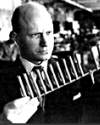 |  A French inventor (1914-1994) built his business empire by creating throwaway Bic pens, razors and lighters. In 1945, he and his friend, Edouard Buffard, acquired an empty factory shell near Paris, France, and soon developed a thriving business, producing parts for fountain pens and mechanical lead pencils. Later, he spent two years developing his ballpoint pen design, and in 1949, he was able to produce a reliable, low cost ballpoint pen. In 1973 the Bic® Lighter was introduced in the U.S., followed by Bic® Shavers, first introduced in 1976. A French inventor (1914-1994) built his business empire by creating throwaway Bic pens, razors and lighters. In 1945, he and his friend, Edouard Buffard, acquired an empty factory shell near Paris, France, and soon developed a thriving business, producing parts for fountain pens and mechanical lead pencils. Later, he spent two years developing his ballpoint pen design, and in 1949, he was able to produce a reliable, low cost ballpoint pen. In 1973 the Bic® Lighter was introduced in the U.S., followed by Bic® Shavers, first introduced in 1976.  Can you name this inventor? Can you name this inventor? |
 |  Leo Szilard (1898-1964) was a Hungarian-born American physicist who, with Enrico Fermi, designed the first nuclear reactor that sustained nuclear chain reaction. Leo Szilard (1898-1964) was a Hungarian-born American physicist who, with Enrico Fermi, designed the first nuclear reactor that sustained nuclear chain reaction. In what decade was his nuclear reactor built? In what decade was his nuclear reactor built? |
| Events | |
 In 1959, the first of a new craft made its first trip at Cowes on the Isle of Wight. It was designed by Sir Christopher Cockerell and built by Saunders-Roe. The invention was considered initially only for military use, but was released for civilian use in 1959. On 25 Jul 1959, the prototype crossed the English Channel. In 1959, the first of a new craft made its first trip at Cowes on the Isle of Wight. It was designed by Sir Christopher Cockerell and built by Saunders-Roe. The invention was considered initially only for military use, but was released for civilian use in 1959. On 25 Jul 1959, the prototype crossed the English Channel. What was the new craft made its first trip? What was the new craft made its first trip? | |
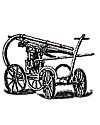 |  In 1821, a fire hose of cotton web lined with rubber was patented by James Boyd of Boston, Mass. He invented it to replace another form of hose then in use. In 1821, a fire hose of cotton web lined with rubber was patented by James Boyd of Boston, Mass. He invented it to replace another form of hose then in use. What was the material used for the older style hose? What was the material used for the older style hose? |
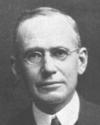 |  In 1898, Morris William Travers, an English chemist, while working with Sir Willam Ramsay in London, discovered a new element. Its name derives from the Greek word for "hidden." It was a fraction separated from liquified air, which when placed in a Plücker tube connected to an induction coil yielded a spectrum with a bright yellow line with a greener tint than the known helium line and a brilliant green line that corresponded to nothing seen before. In 1898, Morris William Travers, an English chemist, while working with Sir Willam Ramsay in London, discovered a new element. Its name derives from the Greek word for "hidden." It was a fraction separated from liquified air, which when placed in a Plücker tube connected to an induction coil yielded a spectrum with a bright yellow line with a greener tint than the known helium line and a brilliant green line that corresponded to nothing seen before. What was this new element? What was this new element? |
| Answers |
When you have your answers ready to all the questions above, you'll find all the information to check them, and more, on the May 30 web page of Today in Science History. Or, try this link first for just the brief answers. Fast answers for the previous newsletter for May 29: Chien-Shiung Wu; magnesium; motion-picture cameras to study the physical and mental development of normal infants and children; Humphry Davy; Albert Einstein - theory of relativity; "The Real McCoy"; Alfred Nobel. |
| Feedback |
 If you enjoy this newsletter, the website, or wish to offer encouragement or ideas, please send feedback by using your mail reader Reply button. If you enjoy this newsletter, the website, or wish to offer encouragement or ideas, please send feedback by using your mail reader Reply button. |
--
If you do not want to receive any more newsletters, this link
To update your preferences and to unsubscribe visit this link
If you do not want to receive any more newsletters, this link
To update your preferences and to unsubscribe visit this link
! !



Δεν υπάρχουν σχόλια:
Δημοσίευση σχολίου